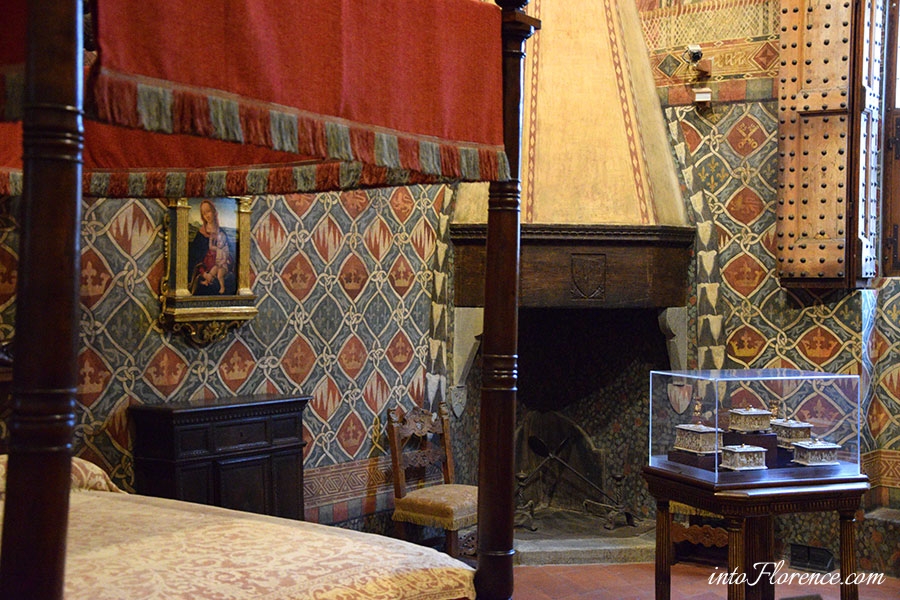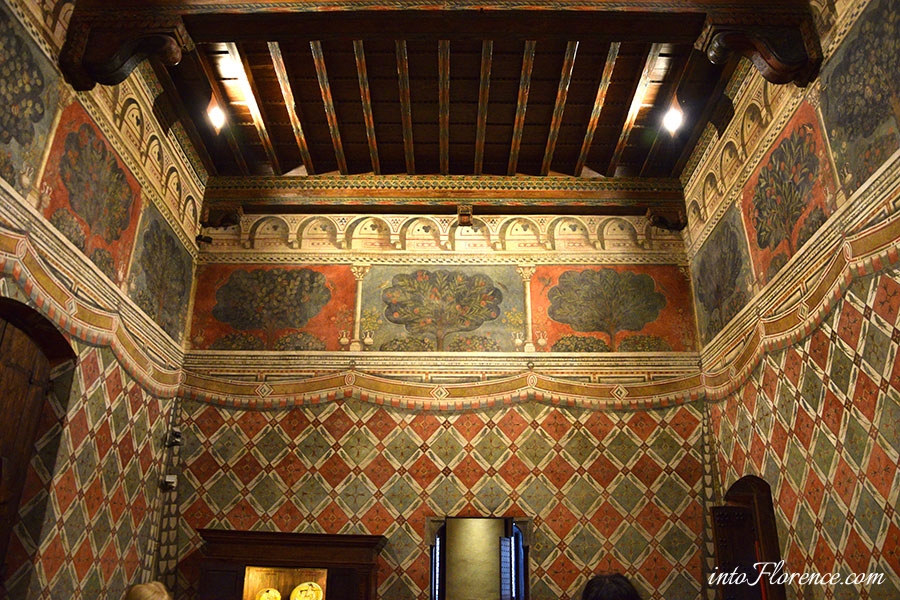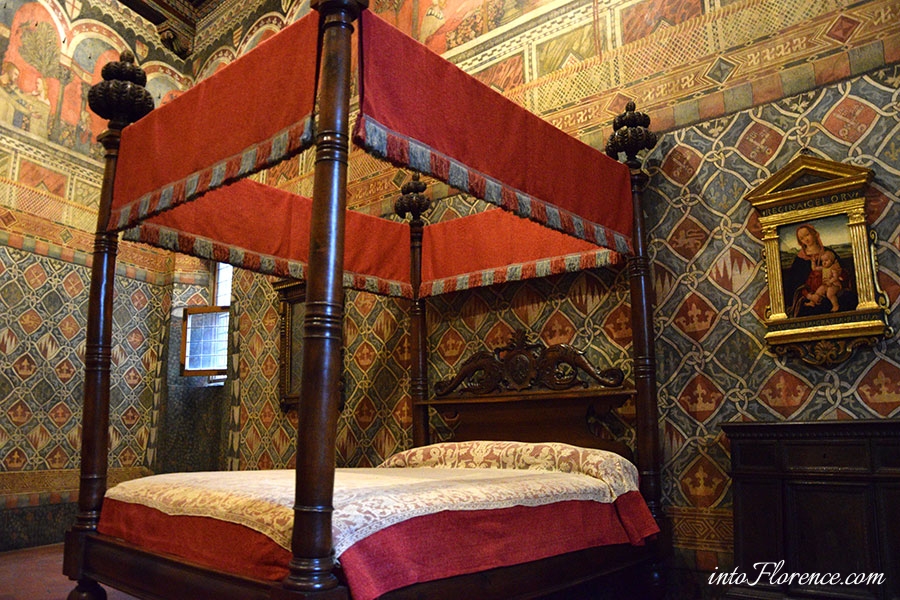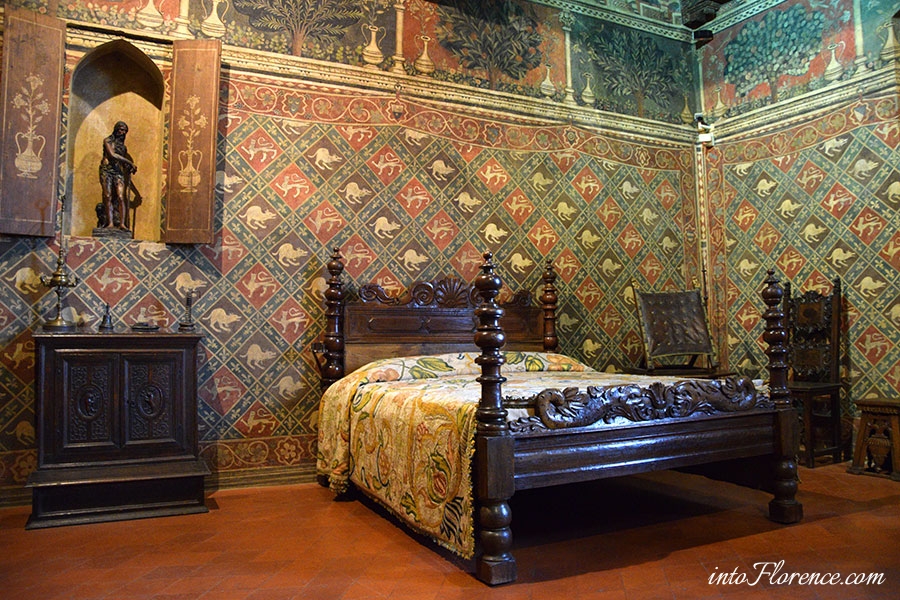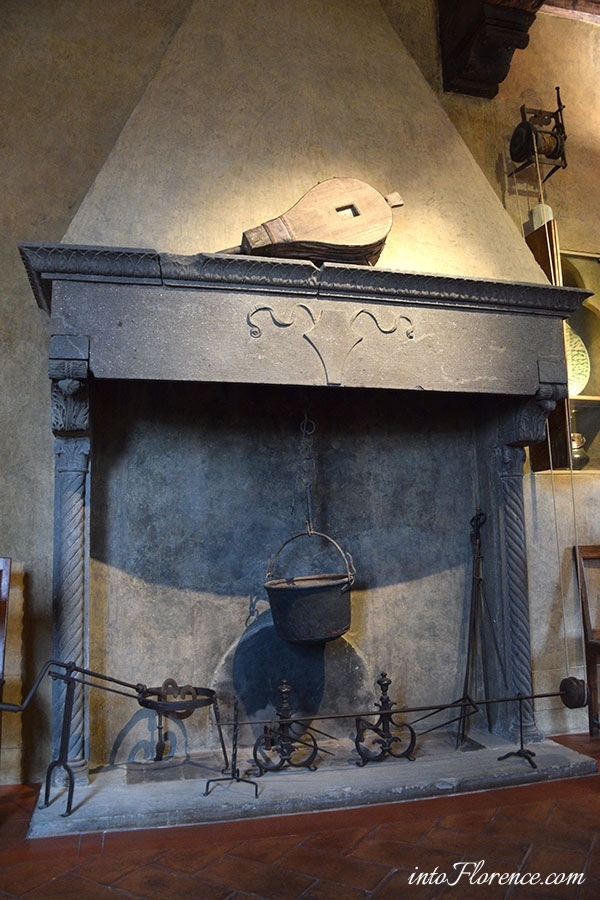Florence has many beautiful historic palazzi and while wandering about the city I often wonder what daily life was like behind these stately facades. How were the rooms decorated? Where did they cook? Did they have a bathroom? The answer to many of these questions can be found in the museum house Palazzo Davanzati where the Museo della Casa Fiorentina Antica is located.
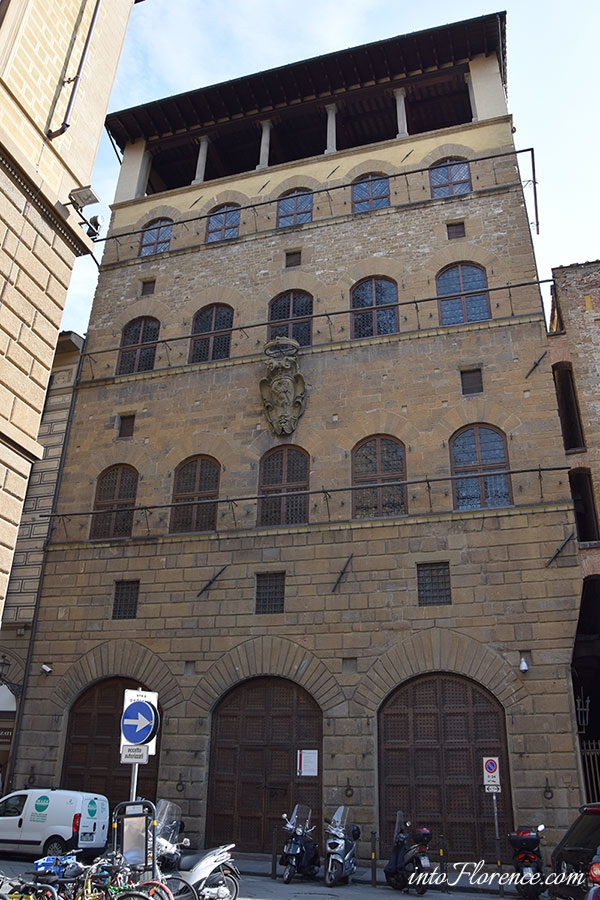 Palazzo Davanzati was built in the second half of the 14th century and is named after the Davanzati family who bought the property in 1578, their coat of arms is still visible on the facade. This rich merchant family lived in the five-storey house until 1883; later in 1910 it became a museum when a wealthy antiques dealer bought the palazzo. In the fifties the building became property of the Italian State. It was turned into a genuine antique residence once again with furniture, art and objects dated from the 14th to the 19th century originating from other Florentine museums and private homes.
Palazzo Davanzati was built in the second half of the 14th century and is named after the Davanzati family who bought the property in 1578, their coat of arms is still visible on the facade. This rich merchant family lived in the five-storey house until 1883; later in 1910 it became a museum when a wealthy antiques dealer bought the palazzo. In the fifties the building became property of the Italian State. It was turned into a genuine antique residence once again with furniture, art and objects dated from the 14th to the 19th century originating from other Florentine museums and private homes.
The building itself is an excellent architectural example of the transition from the closed medieval tower to the opener design of Renaissance architecture. The original façade has a loggia with three arches that in the past housed several shops. In the 16th century the medieval battlements on the top floor were replaced by a more elegant loggia. Medieval towers were a safe haven in the event of a civil war or a feud with another noble family.
Despite renovations that function was preserved in Palazzo Davanzati and in case of an emergency the building could be secured with heavy doors and turned into a fortress. On the first floor there are four large holes in the floor so they could keep an eye on the courtyard below and launch boiling liquids or heavy objects at invaders. Only the stairs to the first floor are made of stone, the upper stairs are all made of wood, so they could easily be taken down during an attack and keep the family safe on the upper floors.
The well in the courtyard was an unprecedented luxury at that time when most households had to go the public fountains to get their water. Through various drainpipes rainwater was conducted to a large reservoir under the well. Through a system of pulleys fresh water could be delivered to all floors of the palazzo.
A wealthy family who could appreciate the good things of life lived in Palazzo Davanzati and that’s apparent from the many bathrooms and toilets. Only the most prominent families could afford to have sanitation in their house. There was no sewage system attached however and emptying the toilet was a job for the maids.
On the first floor of the palazzo there is a reception room, dining room, study and bedroom. The dining room is called Sala dei Pappagalli (Parrot Room) for its colorful murals featuring a parrot. The bedroom is lavishly decorated and also known as the Sala dei Pavoni (Peacocks Room). The room also has a small bathroom.
The layout of the second floor is almost equal to the first floor. The murals in this bedroom tell the story of the Lady of Vergi, a medieval tale written in old French about betrayal and adultery.
On the third floor there is another bedroom and also the kitchen. It was customary to locate the kitchen on a top floor to prevent unwanted smells in the other rooms and to minimize the damage in case of fire. Besides the large hearth, which was used for cooking other everyday utensils such as a juicer, corkscrew, loom and spinning wheel are exhibited in the kitchen.
Several rooms of Palazzo Davanzati were rented out as office space and during those days a large amount of graffiti was drawn and written on the walls. The most particular can be found written high on the kitchen wall and recalls a bloody event in the history of Florence.
1478
Al 26 aprile fu morto Giuliano dei Medici Santa Maria del Fiore.
(On April 26 Giuliano dei Medici died Santa Maria del Fiore)
On that day, Giuliano dei Medici was murdered with 19 stab wounds during Mass at the Cathedral of Florence. His brother Lorenzo Il Magnifico survived the cowardly attack and escaped with only minor injuries. The Pazzi family who wanted to take over power in the city planned the assassination. The Medici brothers were hugely popular in Florence and the angry crowd in the cathedral lynched various members of the Pazzi family immediately after the attack. Others managed to escape but were quickly apprehended and executed.
Tickets: € 2.00
The second and third floors can be visited by appointment by groups accompanied by a guide.
PHOTO GALLERY
Click on the photos for a larger view.

